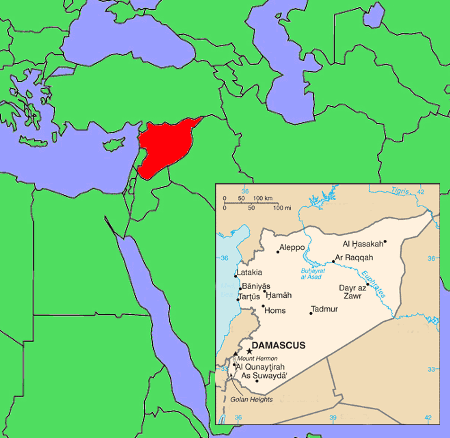
Circle the area on this map

D. The Turkish government is a firm supporter of the rebels, but has not officially approved the sending of military aid. More than 200,000 Syrian refugees have crossed into Turkey to avoid the fighting.
C. Al-Qaeda in Iraq are extremist Sunni Muslims fighting their nation's Shiite majority, and they support rebels who want to establish an Islamic state in Syria. The Lebanese militia Hezbollah has sent fighters to Syria to fight alongside of the regime of President Bashar Assad who comes from the minority Alawite sect, an offshoot of Shiite Islam. Syria also is bounded on the west by Lebanon, southwest by Israel and south by Jordan.
B. Iran's Shiite Islamic government is believed to be one of Assad's key suppliers of rockets, anti-tank missiles, rocket-propelled grenades and mortars. Iran allegedly has been transporting most of the weapons through Iraqi airspace on commercial planes and, more recently, overland through Iraq by truck.
D. The Fertile Crescent is a crescent-shaped region of fertile land around the Tigris and Euphrates Rivers and extending along the eastern Mediterranean Sea down to the Nile River delta and valley. The earliest known western civilizations arose and flourished using the water supplies and agricultural resources in this crescent.